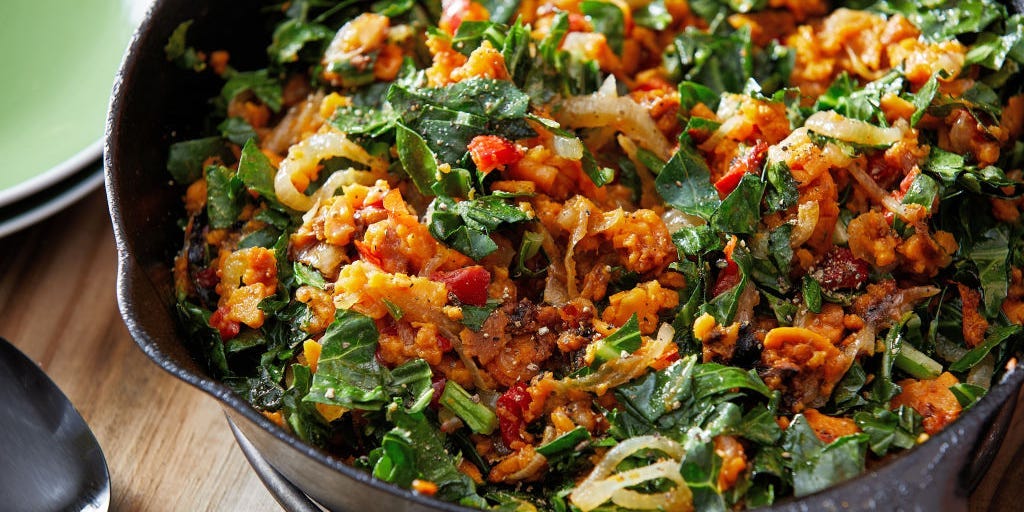- Prediabetes is extremely common but can be easily managed and even reversed with the right diet.
- A pre-diabetic diet won't just help control blood sugar, it's a healthier way to live your life.
- Our 7-day meal plan includes stir-fries, stews, chilis, zoodle dishes, curried lentils, and more.
One of the most effective ways to reverse prediabetes is by changing your diet.
Prediabetes is a health condition marked by abnormally high blood sugar levels that can eventually develop into type 2 diabetes if left untreated.
Moreover, prediabetes can lead to increased thirst and urination, headaches, and blurred vision, while also raising your risk of heart disease, metabolic disease, and stroke.
Thankfully, it's reversible with the right lifestyle changes, key among them being what you eat on a daily basis.
The point of a pre-diabetic diet is to lower your blood sugar levels so that your condition doesn't progress to full-on diabetes, according to Justin Chan, a registered dietitian in private practice and certified diabetes educator.
Below, Chan and other registered dietitians share some tips for what to eat and what to avoid on a prediabetic diet, as well as a handy 7-day sample meal plan to follow.
7-day prediabetes meal plan
When trying to control blood sugar levels and prevent spikes, here are some general rules of thumb:
- Limit carbs so you only get about half of your daily calories from carbs. So, for a 2,000 calorie diet that's equivalent to about 250 grams of carbs per day. (This is the CDC recommendation for those with diabetes but it's a good guideline for controlling prediabetes, too.)
- Limit added sugars, like what you find in non-diet soda and many processed foods (baked good, salad dressings, bottled marinades), to no more than 36 grams (9 tsp) per day for men and 25 grams (6 tsp) per day for women. Your doctor may want you to limit it to even less depending on the severity of your condition.
- Consume healthy complex carbs from sources like whole grains, fruit, beans, and vegetables that contain fiber and therefore take longer to digest, thereby helping maintain steady blood sugar.
- Pair carbohydrates with fat and protein to also help slow digestion and prevent blood sugar spikes.
With that in mind, here's a week-long meal plan to get you started. The meal plan is based on guidelines given to us by Dana Ellis Hunnes, PhD, a senior dietitian at UCLA medical center and author of Recipe For Survival.
Monday
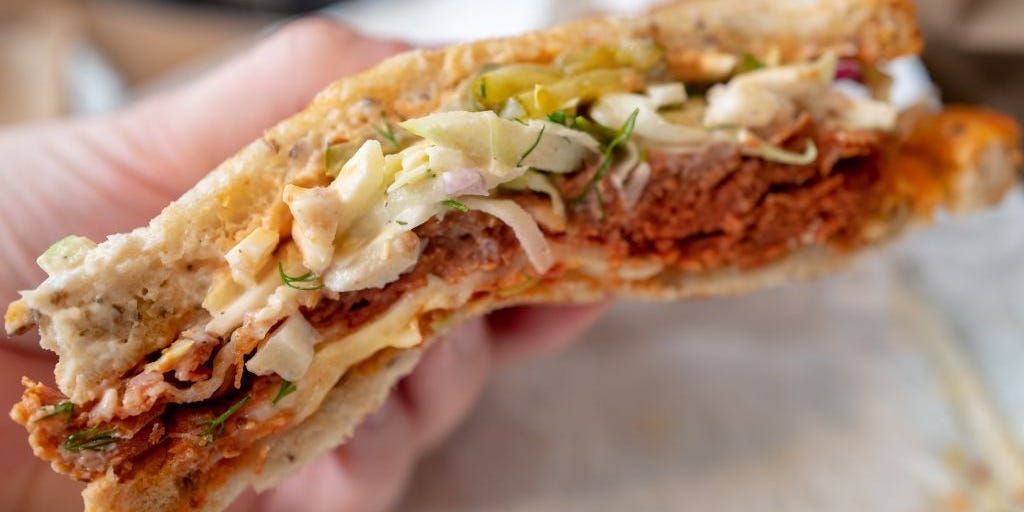
Breakfast: Steel-cut oatmeal with cinnamon, blueberries, and chopped walnuts
Lunch: Grilled vegetable sandwich on whole-grain bread
Dinner: Skinless chicken breast, roasted sweet potato, spinach salad with vinaigrette
Tuesday
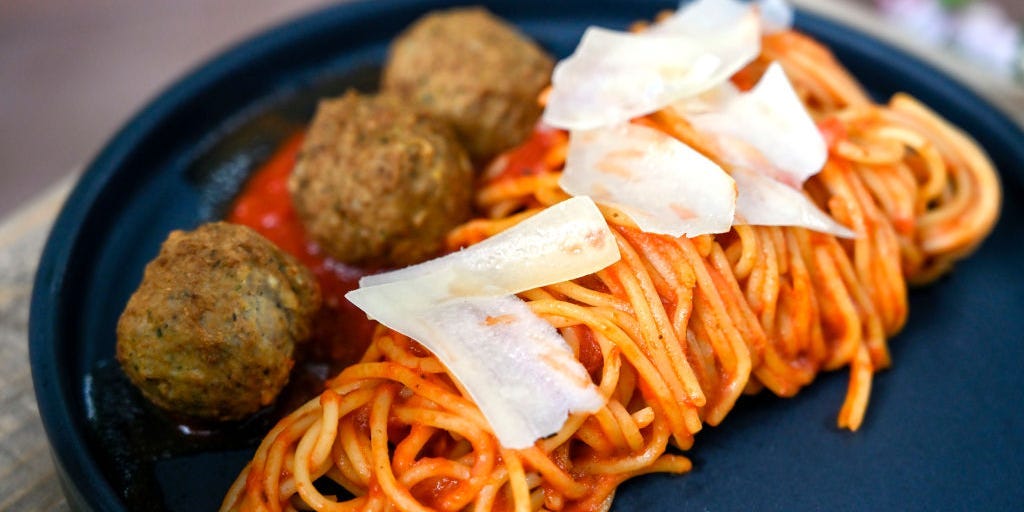
Breakfast: Tofu scramble with vegetables, side of sliced oranges
Lunch: Tuna salad made with low-fat Greek yogurt and mustard over leafy greens, side of whole-grain crackers
Dinner: Whole-grain pasta with marinara and chicken or plant-based meatballs, side salad
Wednesday

Breakfast: Low-fat Greek yogurt with strawberries and slivered almonds
Lunch: Skinless turkey on a whole-grain wrap with avocado, lettuce, and tomato
Dinner: Tofu and broccoli stir-fry over quinoa
Thursday
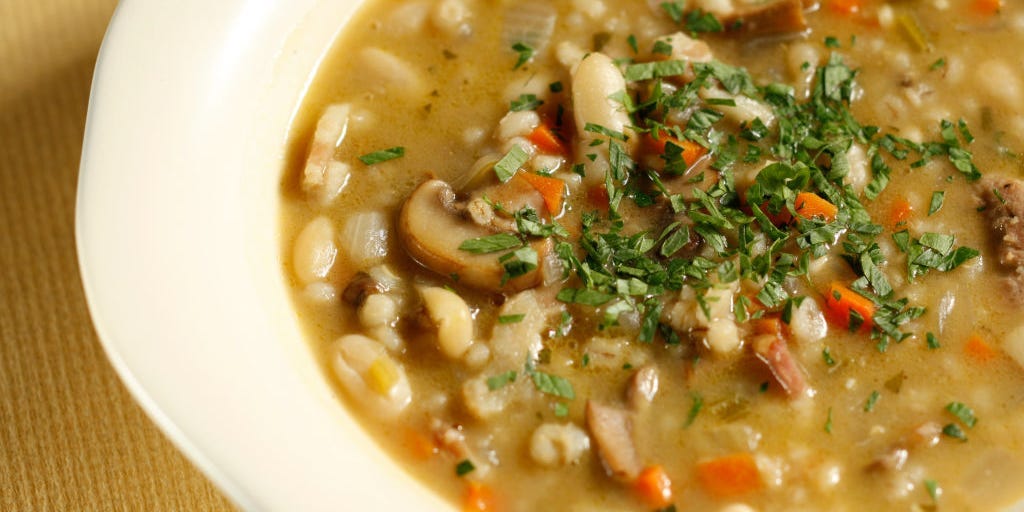
Breakfast: Avocado toast on whole-grain bread with one hard-boiled egg
Lunch: Chickpea and barley stew, apple on the side with skin left on
Dinner: Seared shrimp with pesto zucchini noodles
Friday
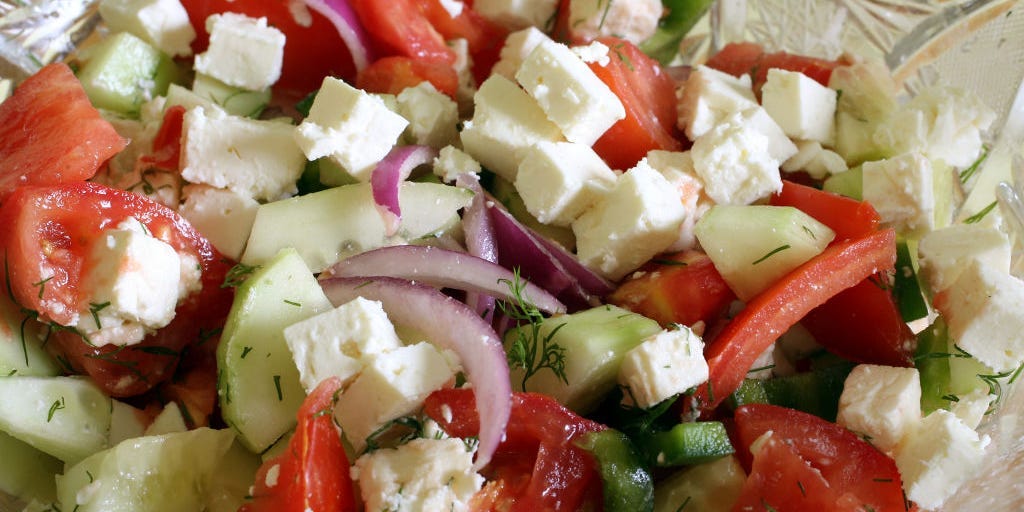
Breakfast: Whole-grain English muffin with peanut butter and sliced apple
Lunch: Greek salad with feta and chickpeas
Dinner: Chicken and black bean burrito bowl with lettuce, salsa, and guacamole
Saturday
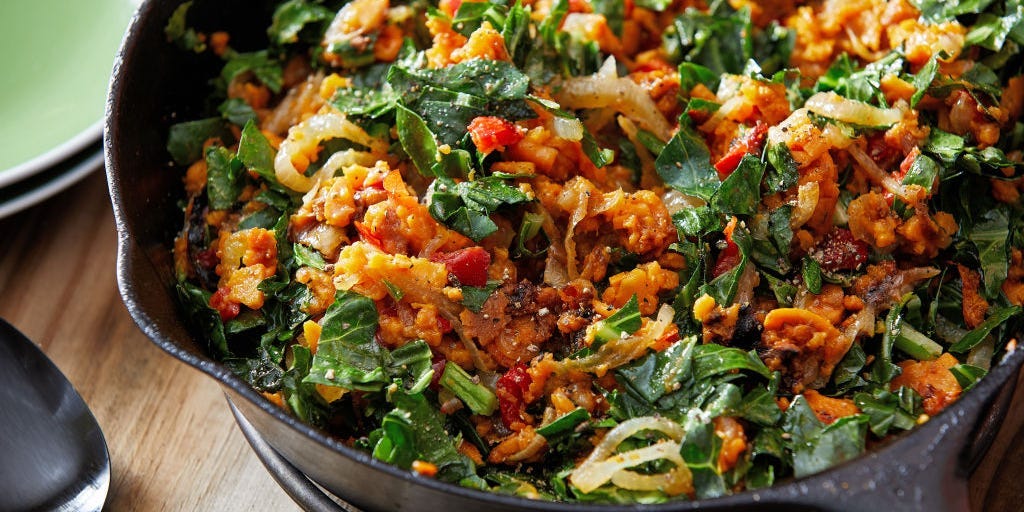
Breakfast: Sweet potato egg white hash with bell peppers and onion, side of half a grapefruit
Lunch: Whole-wheat pita pocket with hummus and vegetables
Dinner: Vegetarian chili topped with sliced avocado
Sunday
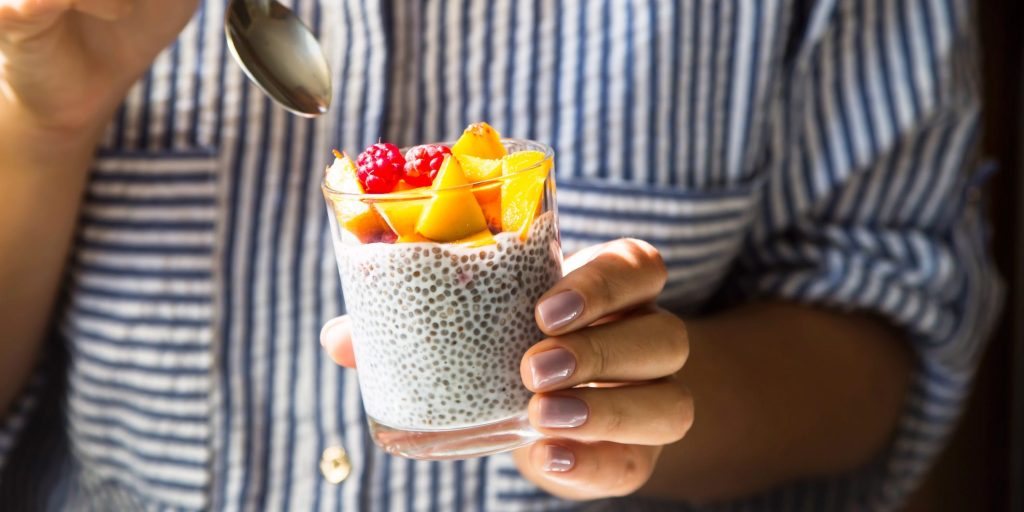
Breakfast: Overnight chia seed pudding made with unsweetened almond milk and vanilla extract, and topped with strawberries
Lunch: Almond butter sandwich with a side of carrot, celery, and bell pepper sticks
Dinner: Grilled salmon over curried lentils, side of steamed or roasted cauliflower
Foods to avoid
The leading cause of prediabetes is insulin resistance. This means that your body no longer responds properly to insulin, a hormone that helps your cells use blood sugar for energy. As a result, your pancreas starts producing more insulin to get cells to respond, eventually leading to a rise in blood sugar.
Ultra-processed foods are associated with insulin resistance and diabetes, in part because foods that are high in carbohydrates but low in fiber and protein can spike blood sugar levels and put extra stress on the pancreas. But it's not just these simple carbs to blame.
Some processed foods high in saturated fat have been linked to increased insulin resistance, and sodium has been linked to a higher risk of developing diabetes.
It's also worth noting that consuming ultra-processed foods is associated with a higher risk of weight gain and obesity — one of the leading risk factors for prediabetes.
With that in mind, here are some foods that Chan and Hunnes advise avoiding while on a prediabetic diet:
- Refined grains, like white bread, pasta, and rice, as well as packaged cookies, crackers, and pastries made with white flour
- Processed meats, like pepperoni, sausage, bacon, hot dogs, salami, and beef jerky
- Sugar-sweetened breakfast cereals
- Sugar-sweetened beverages, like soda, fruit juice, iced tea, and sports drinks
- Alcoholic beverages, especially sugary cocktails
- Sugar-sweetened jams, jellies, and yogurts
- Energy bars, granola bars, and snack bars with added sugar
- Salty snacks, like potato chips and pretzels
- Candy
Foods to eat in moderation
While Chan notes that the bulk of your calories should come from whole foods like vegetables, whole grains, legumes, nuts, and lean proteins, you can still allow yourself an occasional treat.
Below are some examples of healthy treats you can occasionally enjoy on a prediabetic diet, according to Chan:
- Strawberries or cherries with dark chocolate (70% cocoa content or higher)
- Black bean brownies
- Homemade granola made with nuts, seeds, and dried fruit
- Arrowroot cookies or cookies made with almond flour
- Baked apple topped with cinnamon and vanilla Greek yogurt
- One-ingredient "ice cream" made with blended frozen banana and topped with chopped nuts
- Frozen yogurt with mixed berries and shredded coconut
As for how often you can enjoy these treats — your doctor or dietitian can help guide you, but as a general rule, try to limit your daily calories from sugar to about 5%. So for a 2,000 calorie diet, that would equate to 25 grams of sugar.
Other tips
Here are some other tips to keep in mind while transitioning to a prediabetic diet:
- Make sustainable changes: There's no sense in making drastic modifications to your diet that you know you can't stick with long-term, says Chan. For example, rather than adopting a fad diet like keto or Atkins that drastically limits carbs, consider simply trying to swap out refined carbohydrates for whole-grain alternatives.
- Don't eat sugar on its own: When your sweet tooth strikes, Hunnes advises making it a point to pair sugary foods with fat, fiber, or protein to avoid blood sugar spikes. For example, rather than eat a serving of chocolate by itself, consider having some almonds with it.
- Fill half your plate with vegetables: Chan says this is a great way to automatically boost your fiber intake. By filling up on veggies, you'll naturally consume less of other potentially less healthy foods.
- Prioritize portion control: When enjoying occasional treats, Hunnes highly recommends keeping an eye on portion sizes. It may even prove helpful to measure out a single portion of certain carb- or sugar-rich foods — like cereal, fruit, and pasta — to keep your blood sugar in check.
Insider's takeaway
Prediabetes is reversible, and the first step to lowering your blood sugar is making some changes to your eating habits.
Specifically, dietitians say that avoiding processed foods, limiting your carb and sugar intake, increasing your fiber intake, and focusing on whole, plant-based foods can make a massive difference in treating insulin resistance and warding off type 2 diabetes.
Since everyone's dietary needs may vary, it's a good idea to talk with your doctor or a registered dietitian. These healthcare professionals can work with you to design a customized eating plan to improve your blood sugar levels.
